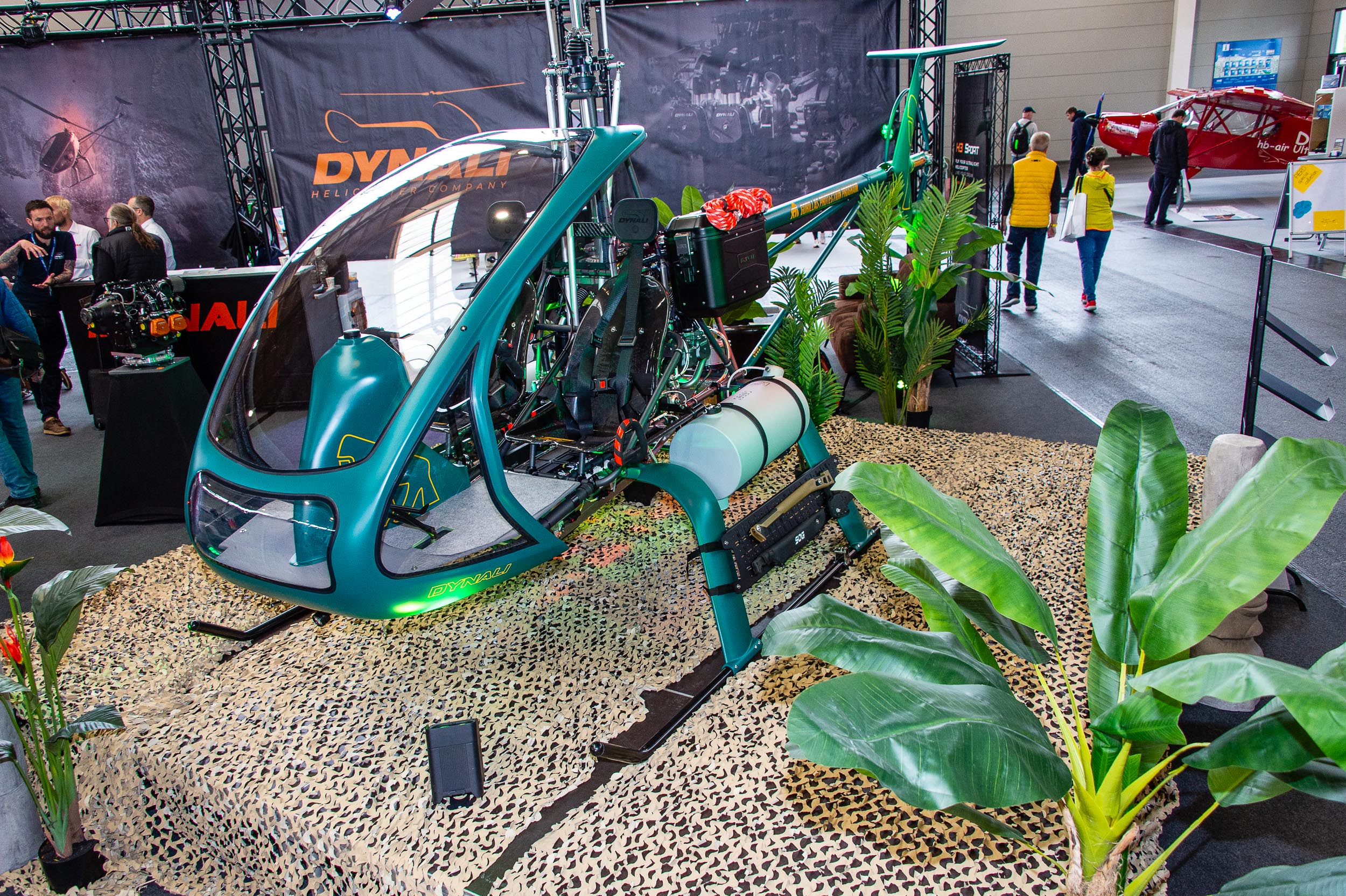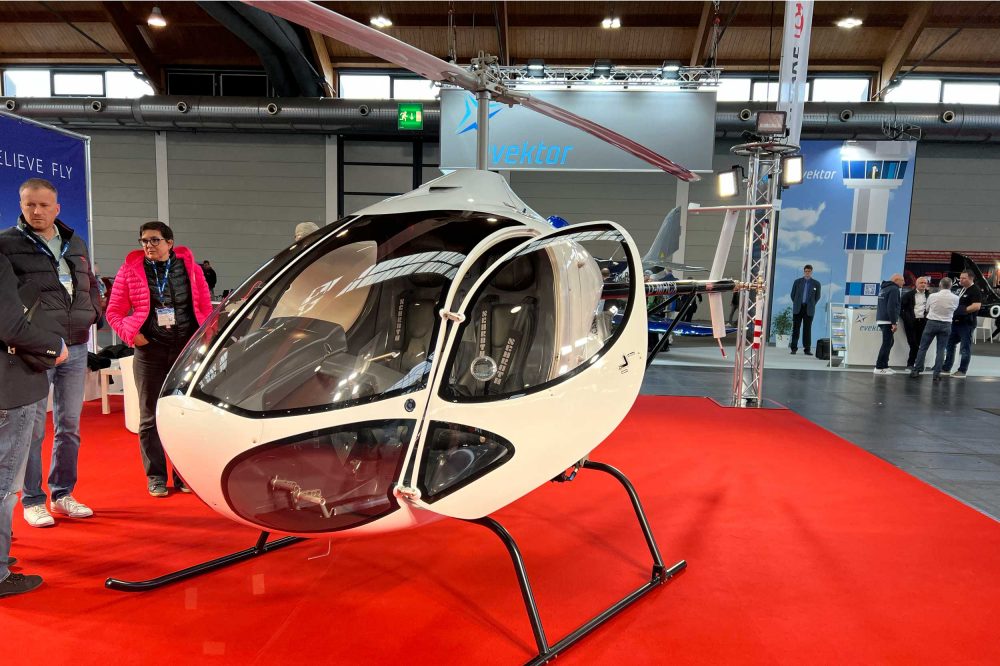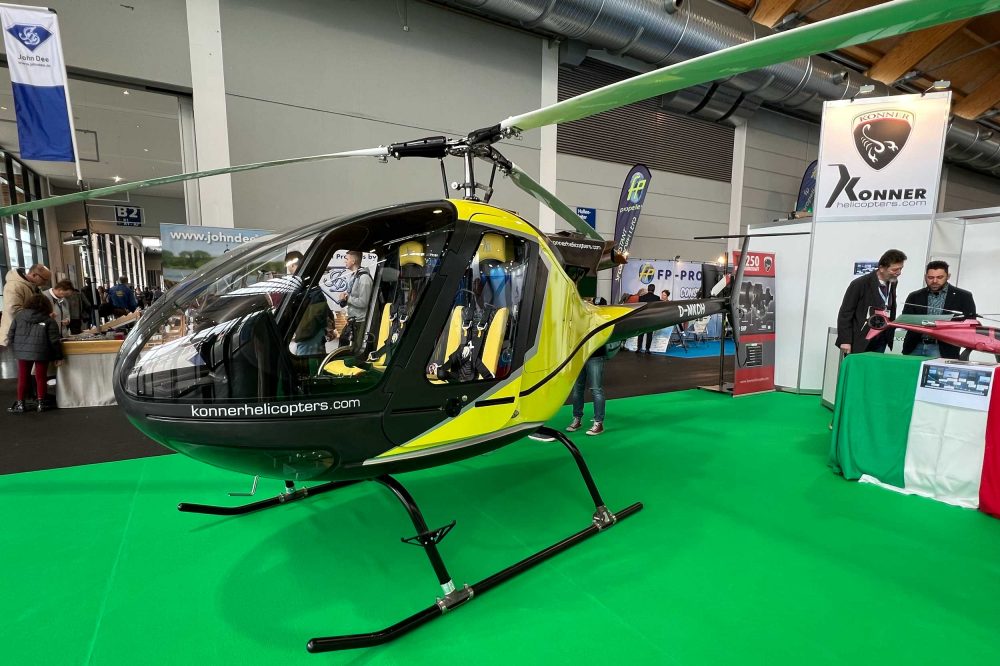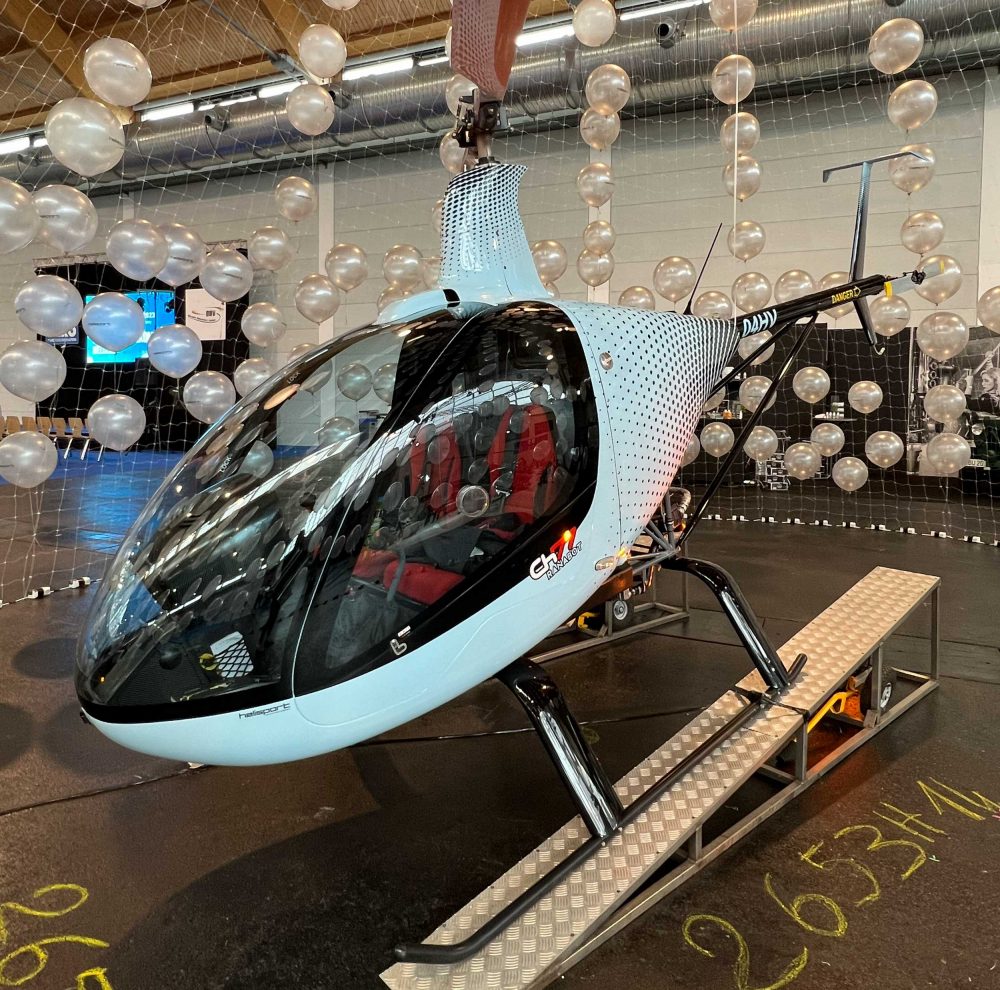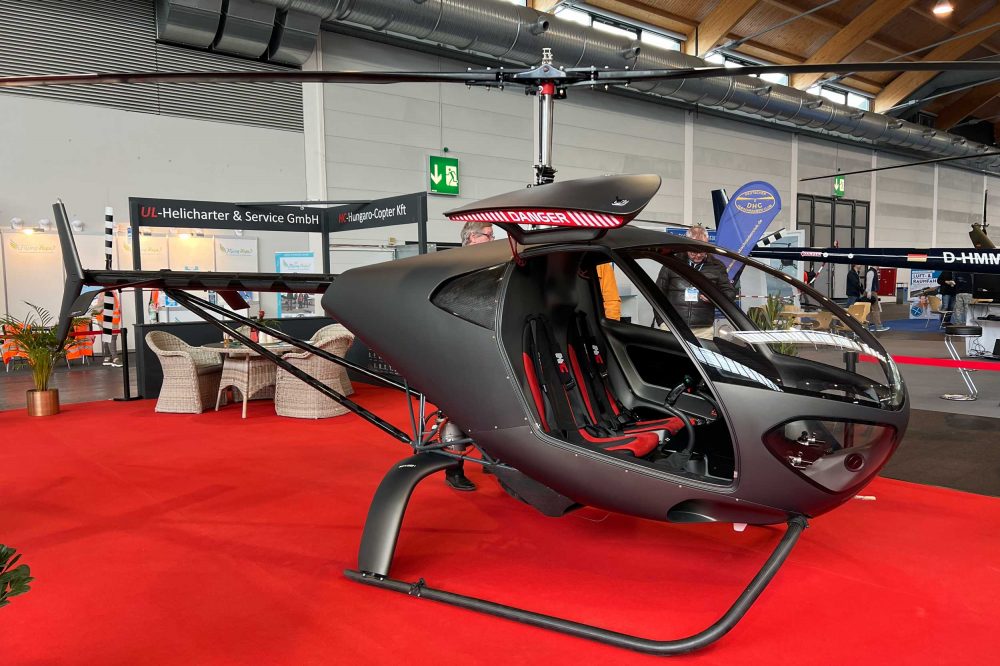Cicaré 8
The Cicaré 8 is a two-seat ultralight helicopter from Argentina. It’s a little on the slow side – 65 to 75 knots – but its two 32-litre fuel tanks give it 2.5 hours of air time for a low operating cost. It has a similar cyclic design to Robinson helicopters, but rather than teetering, both sides can be held at lap level so that the instructor doesn’t have to have the cyclic in the air when following through on the controls.
The interesting thing about the Cicaré is that they’ve developed an innovative platform, the Cicaré Trainer, which they unfortunately didn’t bring to the show. This allows safe hover and hover taxi training on a 12m by 12m concrete surface, and it can be controlled by the instructor via an iPad.
Eventually, they reckon this could even enable indoor training! We did ask whether you can use it for practising engine failures in the hover, but apparently its limited height makes it less effective for this.


